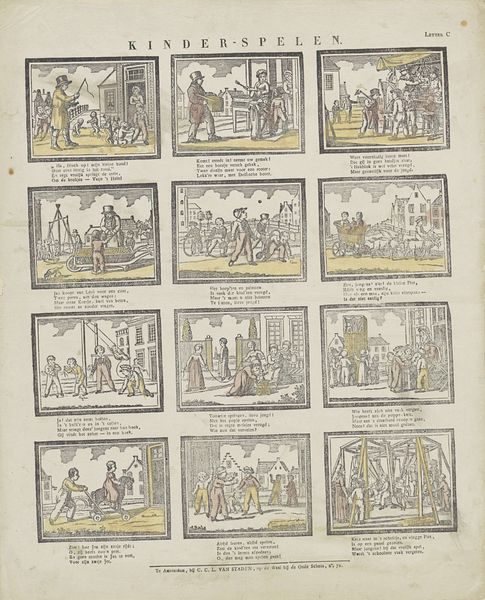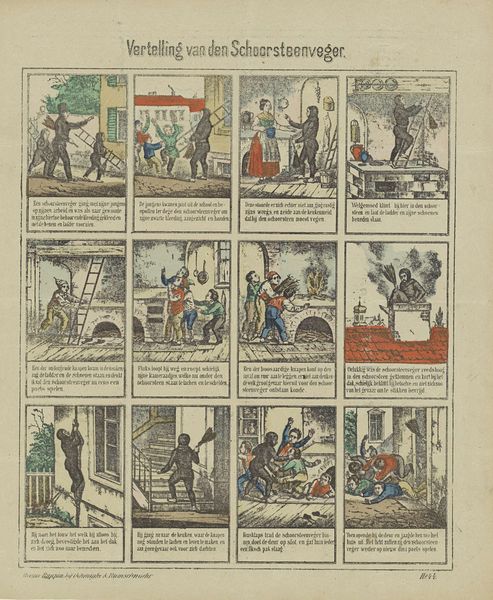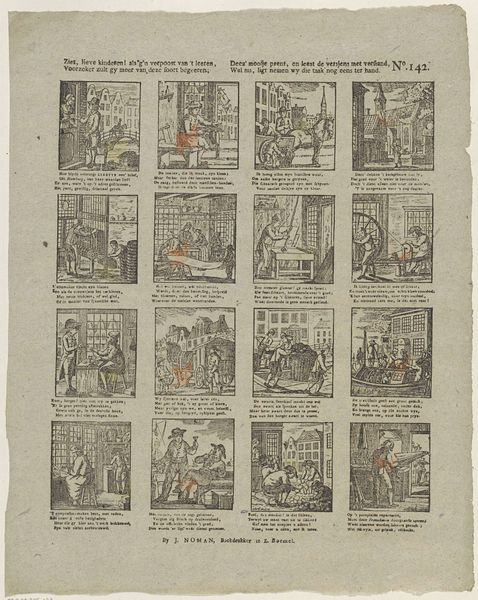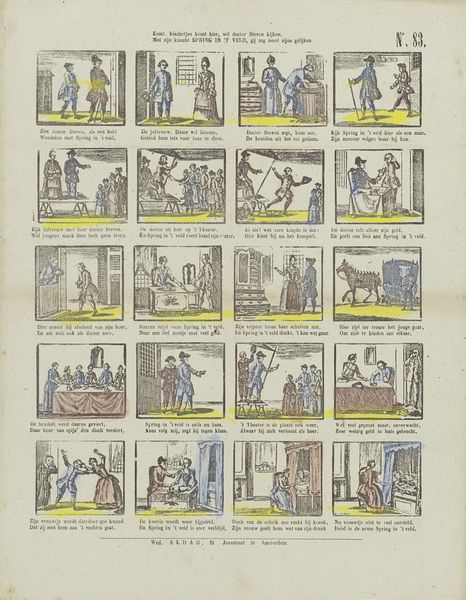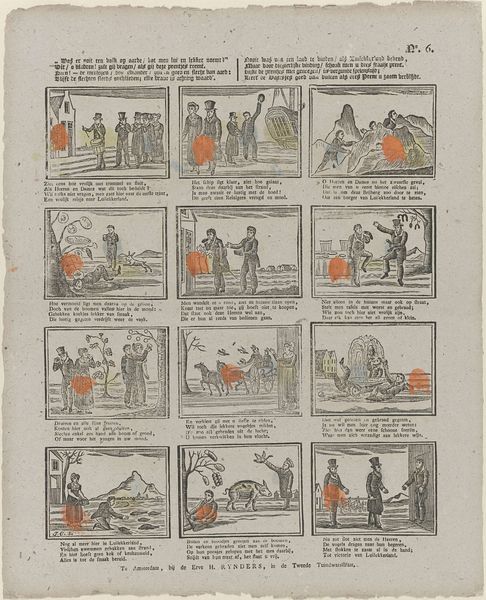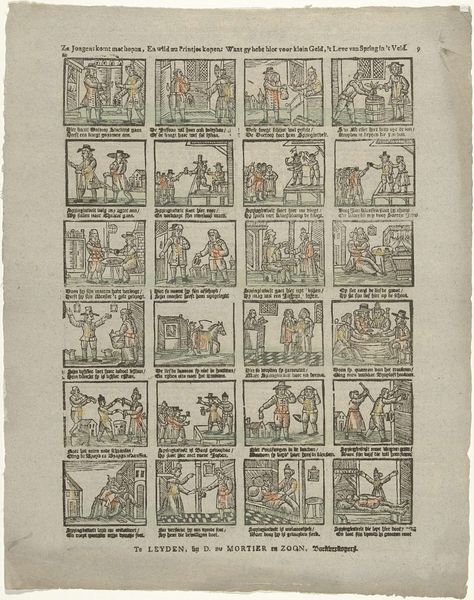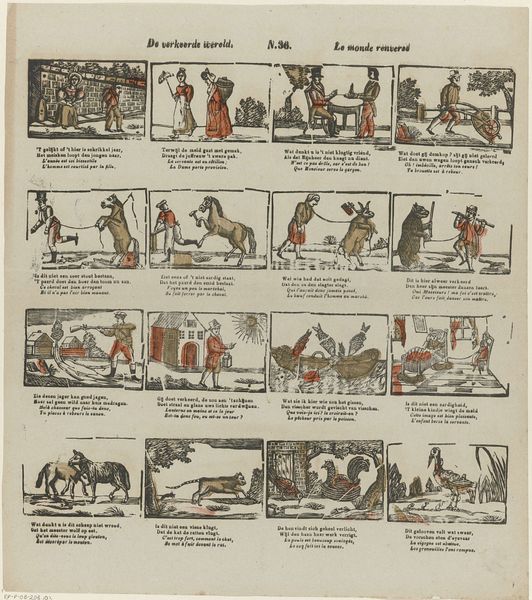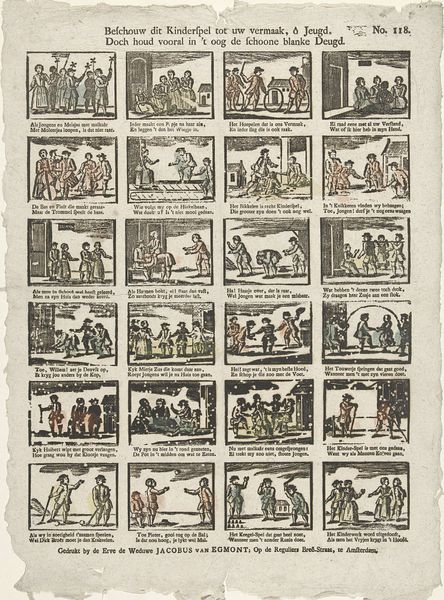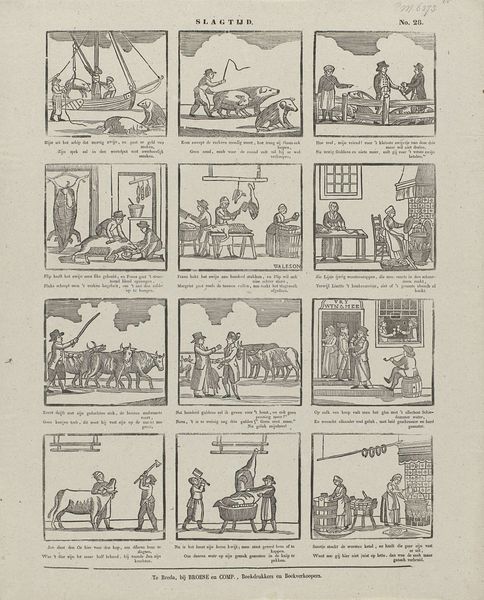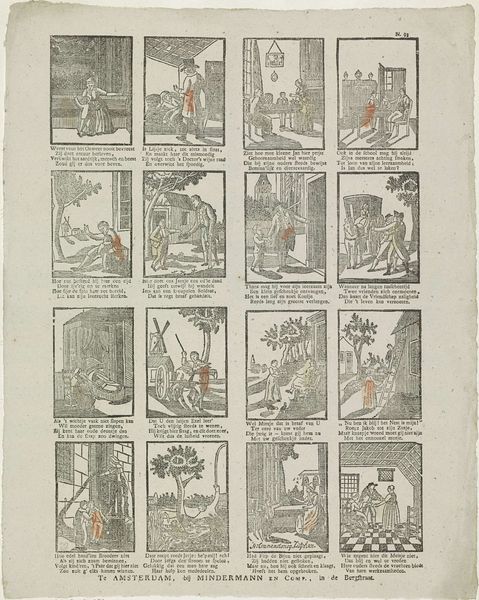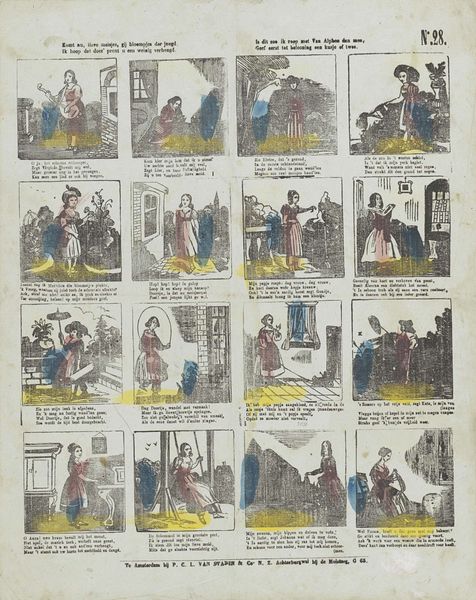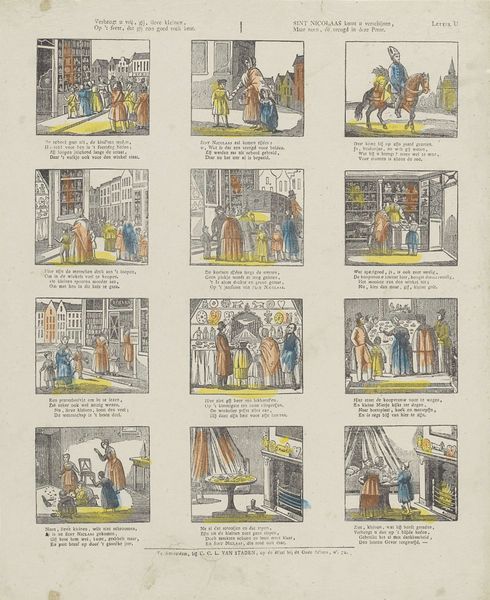
Wie immer Amsterdam beziet / Vergete toch het doolhof niet / Waarvan men / in dees prenttafreelen / De jeugd een schets tracht mee te deelen 1831 - 1854
0:00
0:00
ervehrynders
Rijksmuseum
graphic-art, print, etching
#
graphic-art
#
comic strip sketch
#
quirky sketch
#
narrative-art
# print
#
etching
#
sketch book
#
personal sketchbook
#
idea generation sketch
#
sketchwork
#
comic
#
sketchbook drawing
#
cityscape
#
genre-painting
#
storyboard and sketchbook work
#
cartoon carciture
#
sketchbook art
Dimensions: height 426 mm, width 335 mm
Copyright: Rijks Museum: Open Domain
Curator: Let’s turn our attention to a rather curious print in the collection, “Wie immer Amsterdam beziet / Vergete toch het doolhof niet / Waarvan men / in dees prenttafreelen / De jeugd een schets tracht mee te deelen,” attributed to Erve H. Rynders and dating roughly from 1831 to 1854. It’s an etching depicting a series of small, framed scenes, a bit like a storyboard or comic strip. Editor: My immediate reaction is a feeling of organised chaos. The individual panels are quite small, crammed with figures and details, giving the overall work a sense of bustling, albeit miniature, activity. And is that red paint or dye added to some of the figures? It gives an odd, heightened theatricality. Curator: That splash of red certainly directs the eye. Thinking about the images themselves, they seem to reference a particular societal maze, as indicated by the title. Mazes are often seen as places of initiation or testing, or metaphors for life's complexities. This "doolhof," or maze, hints at challenges perhaps specific to Amsterdam's youth. What symbols stand out for you within the panels? Editor: For me, it's the repetition of the costumed figures – the elaborate robes, military uniforms. These choices scream attention to the accoutrements of status and profession. This suggests an interest in exploring societal roles, their performance, and how these might define the "maze" that young people navigate. How does this etching method contribute? Curator: Etching allows for fine, detailed lines, which were easily reproduced – think about mass production and dissemination of information. Given the possible intention to teach youngsters lessons, making these prints accessible to a wider audience would have been important. Perhaps these panels even reference historical archetypes or cautionary tales familiar from Dutch culture? Editor: Potentially. Also, I’m thinking about the laborious process of etching and printing multiple copies; the craft tradition involved. This suggests this work, although appearing like a simple "comic strip", was conceived in earnest with purpose in both process and narrative for a society on the verge of modernisation. Curator: Exactly. The print’s seeming simplicity is deceptive; there’s much cultural nuance packed into it. Examining art of this nature reveals to us that even what we deem disposable today has enduring merit. Editor: Right. It's an intriguing blend of accessible imagery combined with meticulous workmanship. The narrative comes together in process, which provides for future artists considering image-making.
Comments
No comments
Be the first to comment and join the conversation on the ultimate creative platform.
